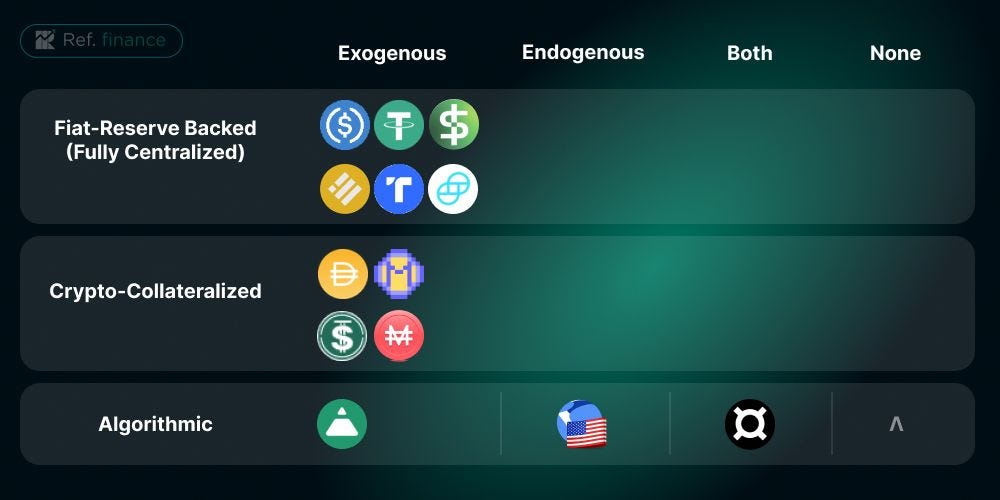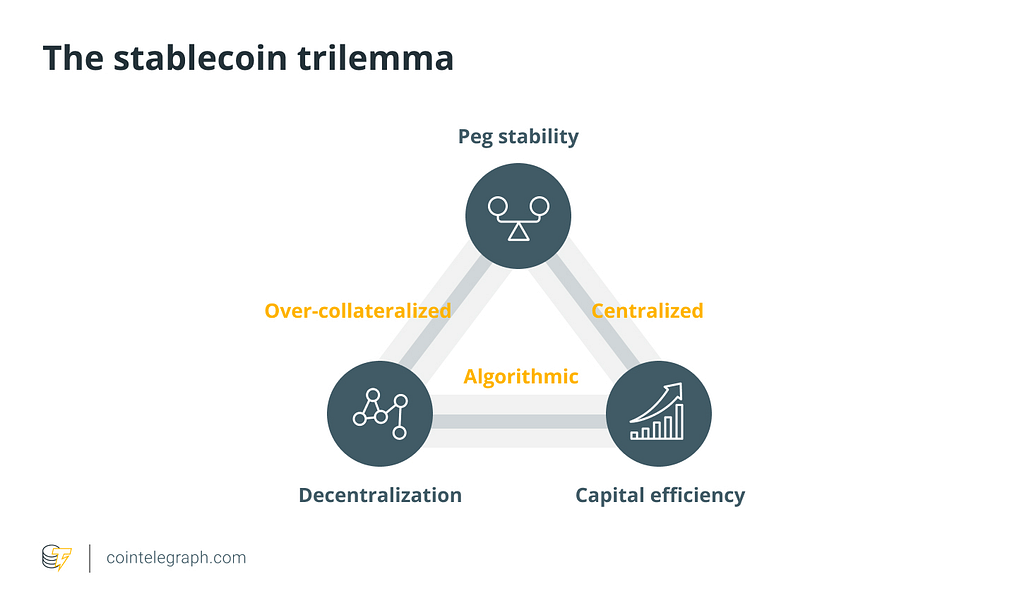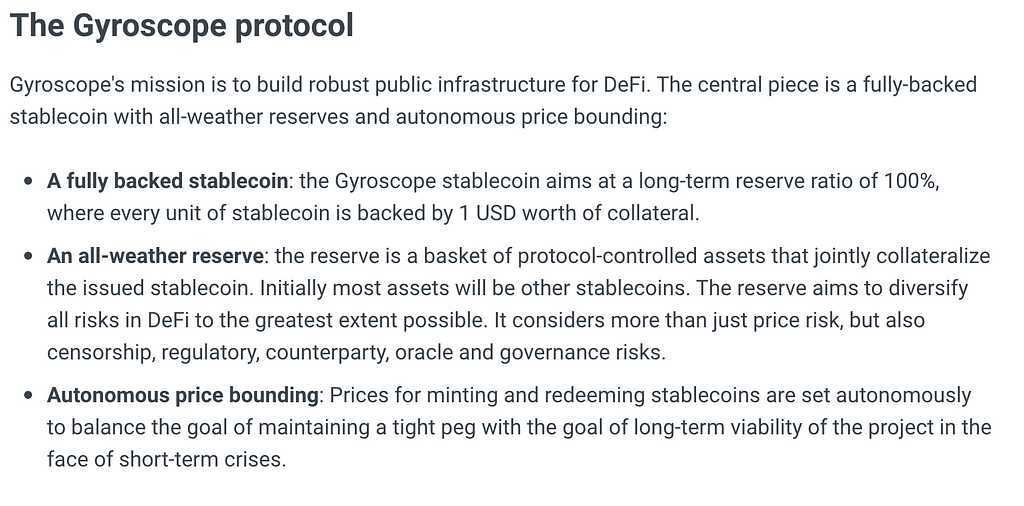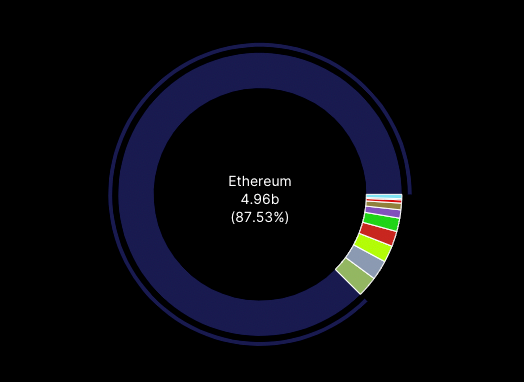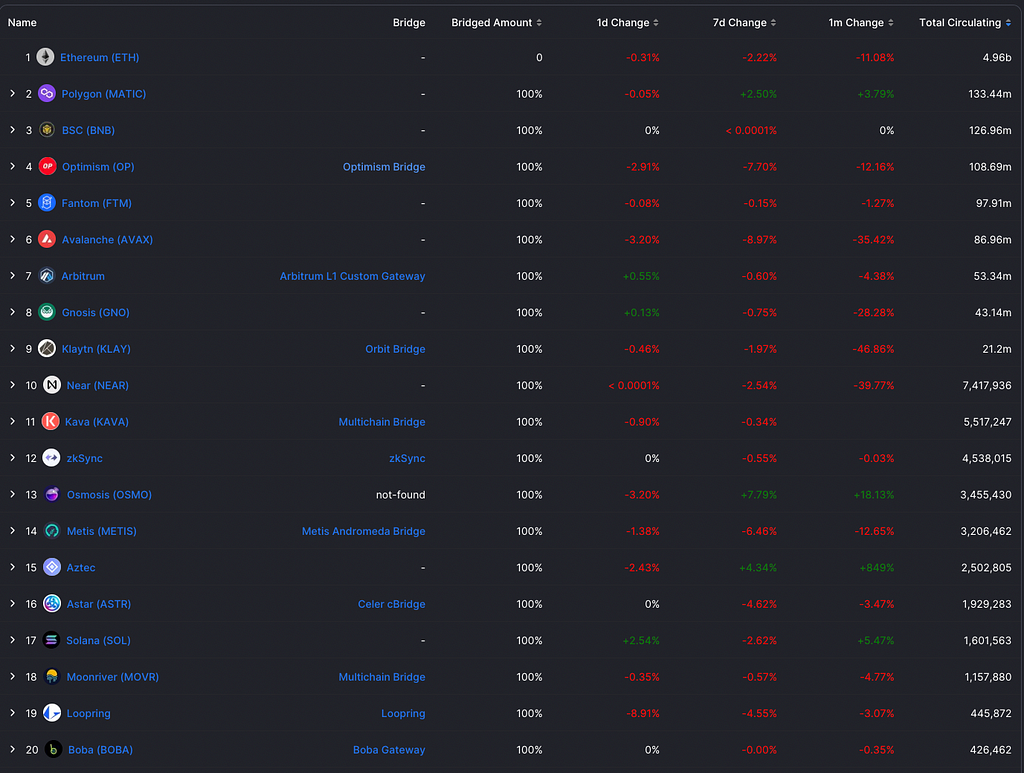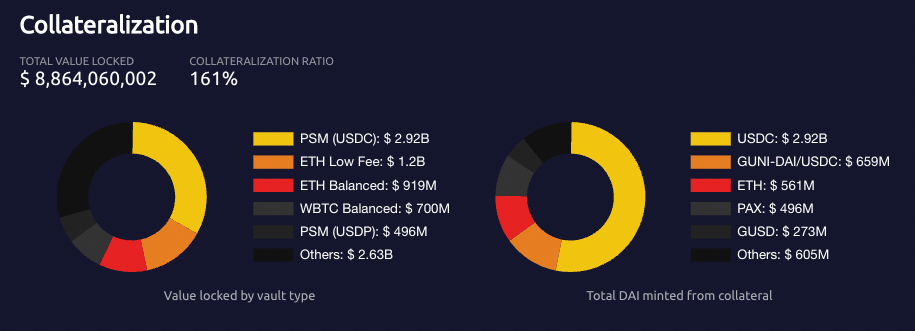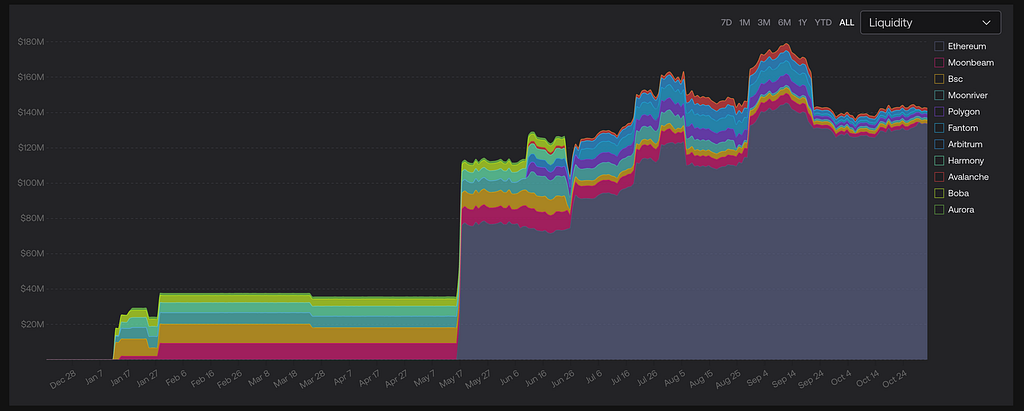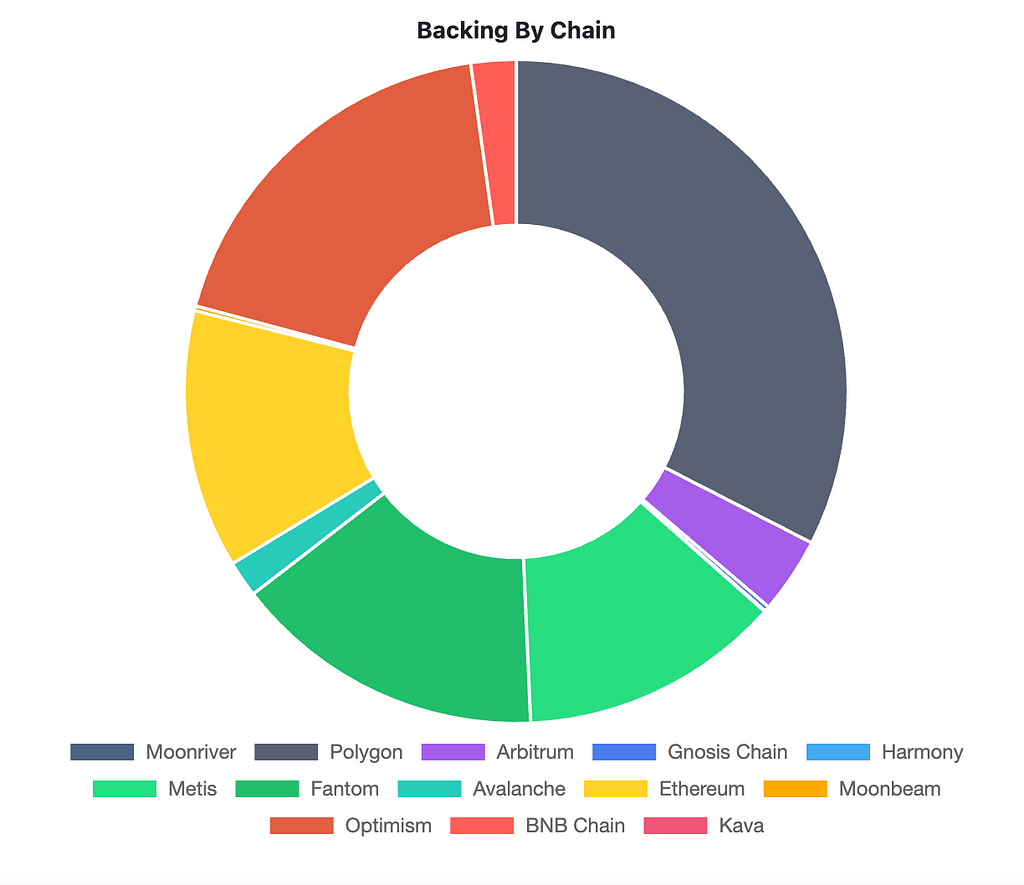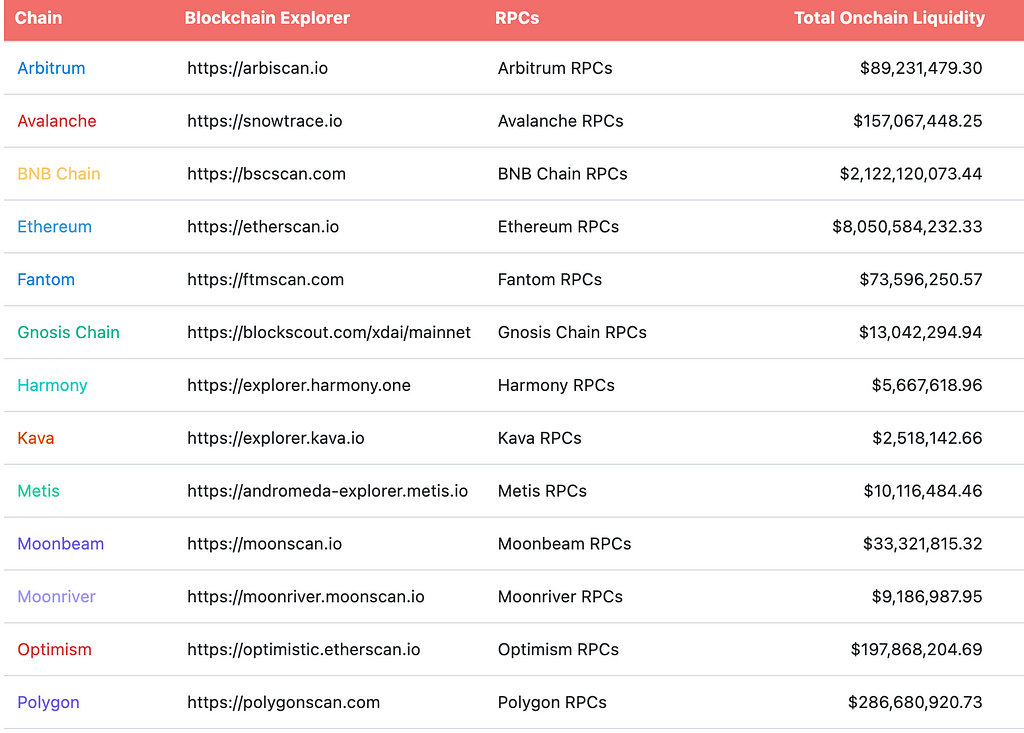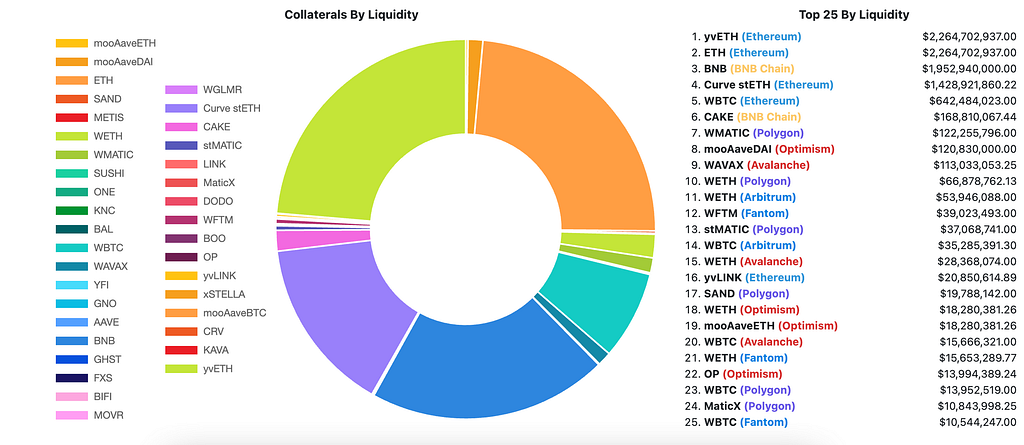A Ref Finance Research Series
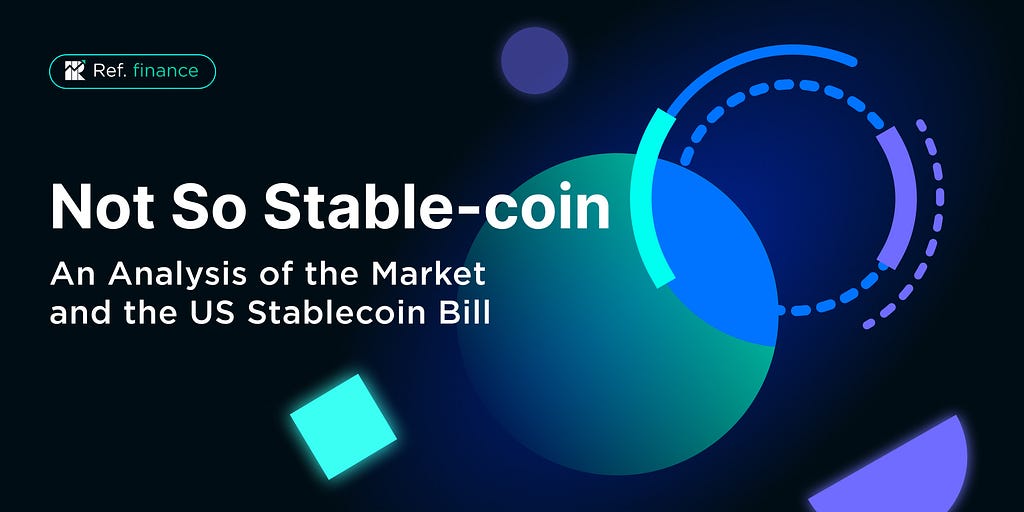
Introduction & Background
The current stablecoin market cap has reached an estimate of $146.41 billion (Oct 23, 2022 CoinmarketCap) and the number continues to grow. By comparison, Bitcoin’s market cap is $375 billion (Oct 23, 2022 CoinmarketCap) and Ethereum’s is $167 Billion (Oct 23, 2022 CoinmarketCap). The global cryptocurrency market cap is $943 billion. In other words, the stablecoin market makes up ~15% of the entire crypto ecosystem.
Following the collapse of the cryptocurrency stablecoin TerraUSD, also known as UST, there has been more and more awareness around stablecoin from both the government and the native crypto community. UST is an algorithmic stablecoin originally designed to maintain a 1-to-1 peg to the US dollar through an algorithm of minting & burning its sister token called Luna. Prior to its crash in May 2022, UST was the third largest stablecoin following USDT and USDC. UST collapsed in May resulting in billion of dollars of losses.
One major reason why stablecoin have value is due to their stability (as suggested in its name), which addresses the many concerns users in the crypto communtiy have. Given how lucrative issuing stablecoins can be (circle revenue) and the boundless use cases it can bring, many are eyeing the opportunities in stablecoins following the crash of TerraUSD.
What is Stability?
Relative measure to other currencies
Before diving into the specific of stablecoins, it is worth theorizing on what it means for a stablecoin to be “stable.” Stability is a relative metric after all. In the past, statisticians and economists have measured stability using some of the following metrics:
- Volatility, standard deviation of return (restricting within a specific interval)
- Worst drop over a timeframe
Relative measure to its historical price: Inflation
As a relative measure, a stablecoin might be considered as stable to its pair but what about comparing to its historical price? If all coins were to measure their stability relative to the US dollar, one must assume the USD is also stable? It is worth noting that USD also incurred its own “instability” with inflation. The example below showcases that the US dollar has a cumulative rate of inflation of 72.4% since 2000.
The main point being the usual conventional way the community define stability is typically with respect to other currencies during the same time interval.
Hence, we can summarize that “stablecoins” are not “stable” in an absolute sense but rather in a relative measure when comparing to other cryptocurrencies or its historical price (Inflation-Adjusted).
Type of Stablecoins
Designing a stablecoins can come from many directions:
In early May, when Terra lost its peg, people became more aware of the differences between algorithmic stablecoins and centralized stables that back their coins with cash or cash equivalent reserves, like USDC and USDT.
Not so Decentralized…
The chart above showcases the top 10 stablecoins by market cap alongside some other notable ones in terms of design or recent sentiment. As one may have notices, most of the stablecoin markets liquidity (ironically) flows toward a centralized service whereby the stablecoin is issued by a centralized services/corporates such as USDT issued by Tether and USDC issued by Circle (even though the goal in a blockchain is to create a decentralized network). One can infer that the general market consents that users (at least for now) have a preference of stability, security and other risk factors (such as depeg or smart contract hack) a lot more than decentralization. However, as shown in MakerDAO’s The Endgame plan, the community hopes to go fully decentralized in the near future even if it comes with a cost.
The Stablecoin Trilemma
Similar to the blockchain trilemma (decentralization, security, and scalability), stablecoins also have their own trilemma between decentralization, peg stability, and capital efficiency. As of now, it seems that people care more about peg stability and capital efficiency, which leads towards a centralized stablecoins.
Reaction following the Terra/Luna Crash
Crypto Community (Stablecoin War)
Following the UST crash, there has been a rise of builders across chains building new stablecoins with the hope to replace UST leading to a stablecoin war. Some examples include USN on NEAR, HBB on Solana, BUSD on BSC and HAY on BSC, GHO from Aave. As well, rumors that crypto exchange FTX is working on creating their own native stablecoin and Huobi recent delisting of HUSD replacing it with USDT and USDD where USDD was founded by Tron founder Justin Sun who has taken a senior role at Huobi.
In addition, the Gyroscope Protocol is in the long development and making of its stablecoin where the stablecoin design incorporate ideas from AMM to ensure the following three key ideas:
(Source: Gyroscope)
Federal Regulation
In September 2022, legislation to regulate stablecoins was drafted in the house with the intent to put a 2 years ban of algorithm stablecoin. According to Bloomberg, the bill would criminalize the creation of “endogenously collateralized stablecoins.” To put it simply, the government plans to regulate all stablecoins protocols where the collateral involves tokens that are native to the protocols itself. Examples: UST/Luna, Frax/FXS (partially)
Such a bill raises concerns on stablecoins that are collateralized with volatile crypto assets or a mixture of both pegged stablecoin and volatile crypto assets.
The draft bill also requires the U.S. Treasury to investigate on algorithmic stablecoins and collaborate with the Federal Reserve, SEC, and FDIC.
Additionally, the bill would allow banks to issue stablecoins once approved by their federal regulators while non-bank stablecoin issuers would have an application process for making decisions to the Fed for approval.
State Regulation
Meanwhile, the crash of UST has also raised state government and regulator attention towards stablecoins. Although there have been many unregulated aspect in the crypto world, the collapse of UST quickly have helped regulators narrow down their first focus in crypto: stablecoins.
In August 2022, the California Senate passed a bill requiring new licensed stablecoins to be licensed either by a bank or a fully backed by secure reserves. The bill also prohibits any existing stablecoin that cannot publicly prove their reserves or isn’t issued by a bank from being traded in the state of California, resulting in the banning of many existing stablecoins. A possible consequence of such bill is that it can also affect major crypto exchanges, such as FTX and Binance where stablecoins are used for their individual operations on a day-to-day basis.
California Gov. Gavin Newsom has yet to sign the bill into law, but if he does, it will go into effect in January 2025.
Analysis
How Decentralized are stablecoins?
Let’s take a deeper look into how decentralized stablecoins are. Putting governance aside, let’s just analyze and measure how decentralized the collaterals for collateral-based stablecoins are and native token for algorithm stablecoins.
Top 5 Stablecoin by market cap (source defillama October 23, 2022)
- USDT — Fully centralized by Tether backed by USD
- USDC — Fully centralized by Circle backed by USD
- BUSD — Fully centralized by Binance backed by USD
- DAI — Over 50% collateralized by USDC and 87.53% of all DAI are on Ethereum blockchain
Collateral by Chain
(Source: Defillama November 2, 2022)
Collateral by Liquidity
(Source: Marketburn November 2, 2022)
5. FRAX
Collateral by Chain
- MAI — Diversified across chains and collaterals by liquidity/tokens.
Collateral by Chain
(source: Risk Management QIDAO, Nov 1, 2022)
Collateral by Liquidity
(source: Risk Management QIDAO, Nov 1, 2022)
Stablecoin Protocols Revenues/Profit
As noted previously, with the hope to replace UST, more protocols/institutions are building stablecoins leading to a stablecoin war. A natural question one may wonder is how much revenue/profit can stablecoin generated. Lets dive into it.
USDC
As a centralized institution, Circle is the issuer behind USDC where institution can convert USD to USDC through Circle. To generate revenue, Circle then take the proceedings and purchase US treasury bonds to receive interest payment.

(Source: Circle 2022–2023 Financial Projections)
DAI (MakerDAO)
As one of the first collateralized stablecoins, DAI has experienced most of the Defi/crypto cycle with extreme revenue and profit.
Revenue & Profit
MAI (QIDAO)
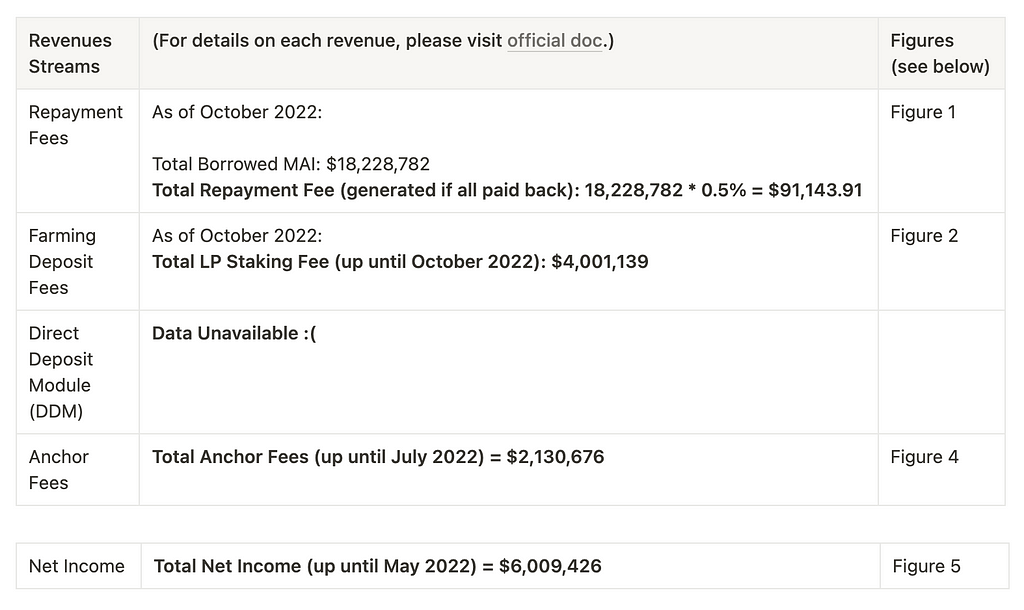
Figure 1: (Source: Dune)
Figure 2: (Source: Dune)
Figure 4: (Source: Dune)
Figure 6: (Source Data from Lao Zi)
Additional Resources
With the intend for general audiences, the primacy focus of the article provides an overview, insights and analysis of the current stablecoin market. However, for those who are interested in specific stablecoin protocols, I hope to provide more additional resources:
- Helio (HAY), decentralized stablecoin on BSC
https://medium.com/@Helio-HAY - Aave Yield-Generating Stablecoin, GHO
Aave Passes Proposal for Yield-Generating Stablecoin GHO
Details on GHO design
Contact Author
Twitter: @lokpray
Disclaimer
Ref Finance does not endorse or promote any of the projects, platforms or cryptocurrencies mentioned in this blogpost. Any descriptions of functionality and services provided are for information only. Ref Finance is not responsible for any loss of funds or other damages caused as a result of using the projects, platforms or cryptocurrencies described above.


